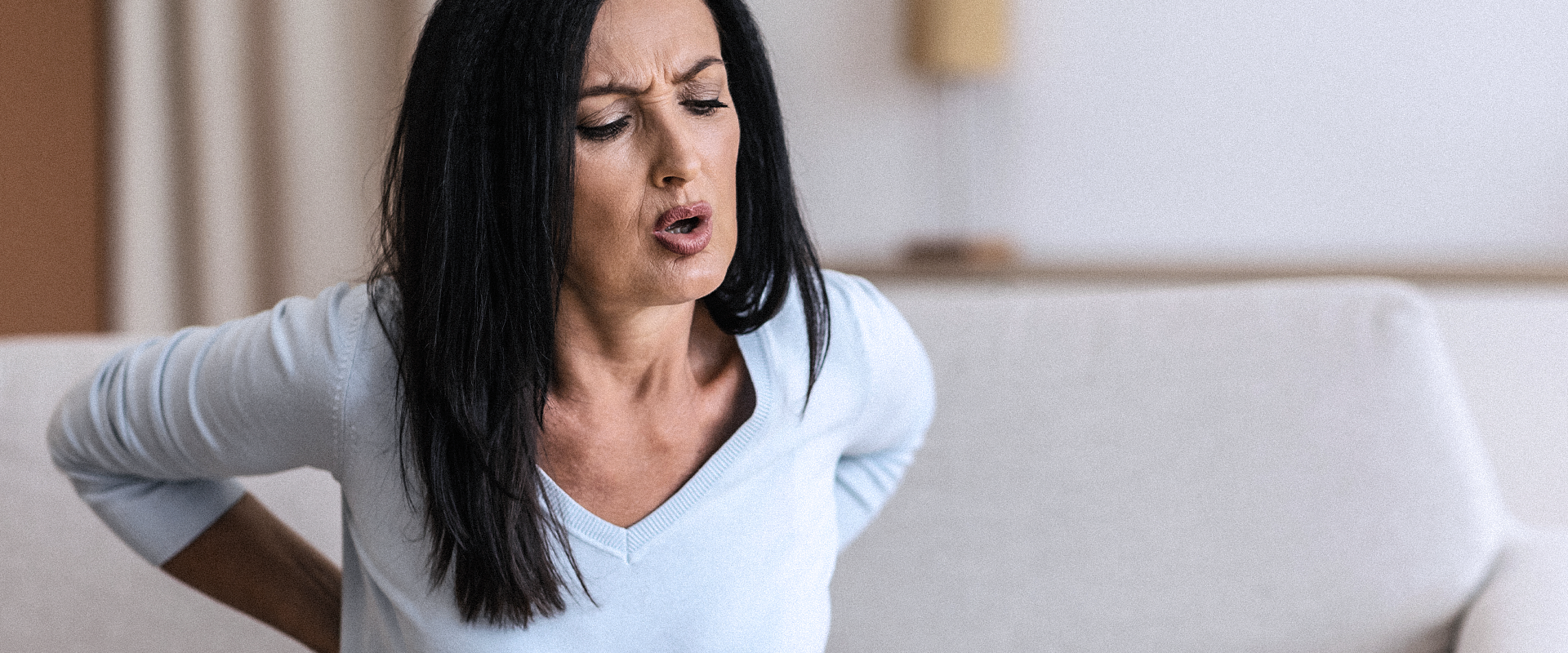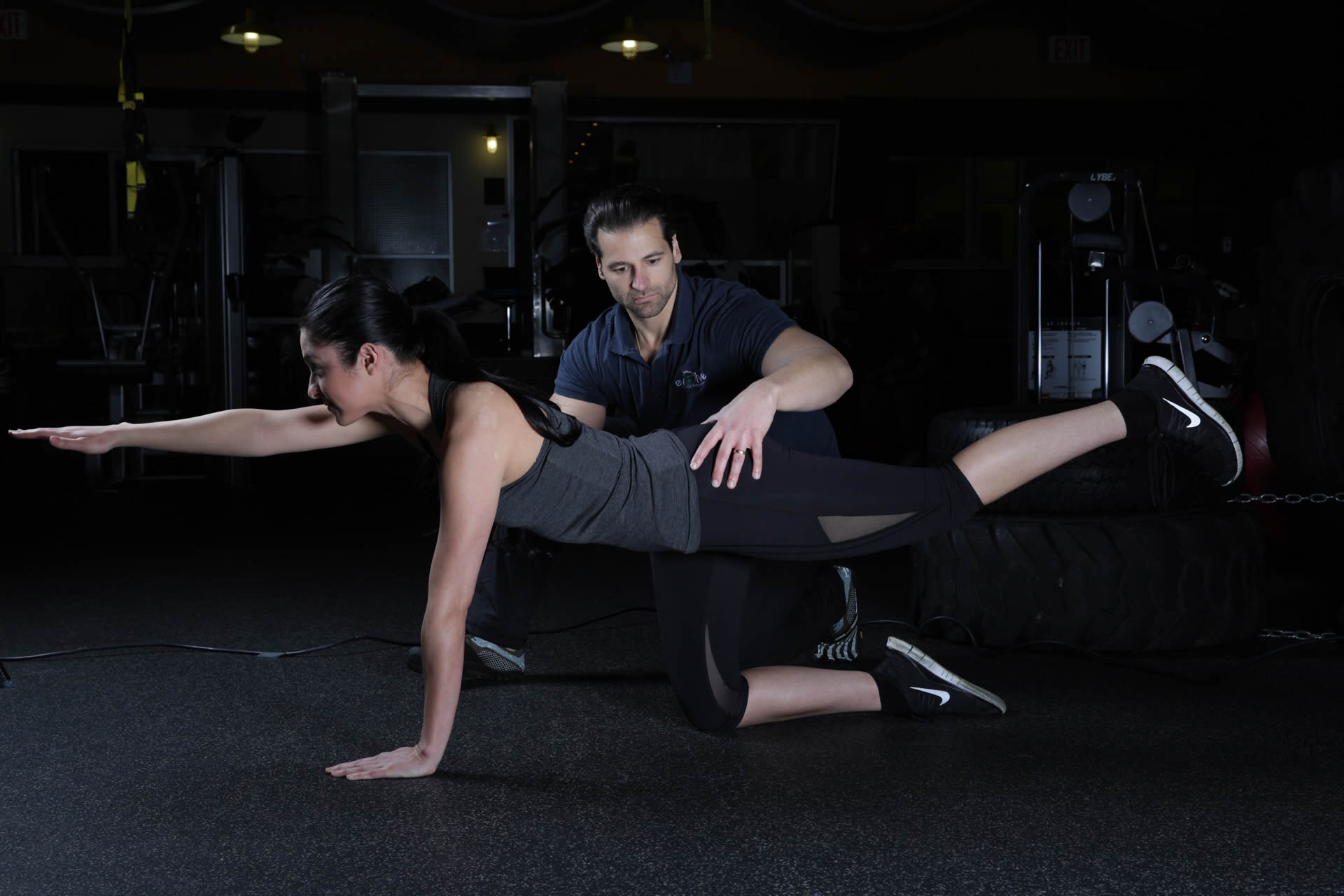
Physical Therapy for Spinal Stenosis
AT EVOLVE
Physical Therapy for Spinal Stenosis
HOW CAN PHYSICAL THERAPY HELP MY SPINAL STENOSIS?
If you are experiencing pain, numbness, tingling or weakness in the arms, shoulders, legs or trunk possibly accompanied by intermittent bowel and bladder problems, you may have a condition called spinal stenosis. While a mild degree of spinal stenosis may go unnoticed, if it is causing symptoms that are interfering with your daily life, it is time to take action. Physical therapy is a great conservative option for addressing the symptoms of spinal stenosis. With improvements in your symptoms and therefore daily function, you can reduce the need for pharmaceutical and surgical management.
WHAT DOES PHYSICAL THERAPY FOR SPINAL STENOSIS LOOK LIKE?
The hallmark of a good physical therapy program for spinal stenosis is that it is individualized. My team of therapists and I will always start by getting to know your concerns and goals and performing a thorough physical exam to look for the cause or contributing factors to your symptoms. With all of this knowledge in hand, we will create a custom program that may consist of hands-on techniques performed by our therapists to your spine and nearby areas combined with carefully prescribed movements and exercises performed by you in the clinic and at home.
WHEN WILL I BEGIN TO SEE RESULTS?
While full resolution of symptoms can take some time, you may begin to see some results right away. Your physical therapist will help to relieve the irritation on the spinal cord and spinal nerves to give you some immediate relief while also creating a plan for longer term symptom management. You should experience improvements in many symptoms such as pain, stiffness, and inflammation within a couple of weeks but returns in strength, flexibility and overall mobility may take longer. Achieving long lasting results may take some time, but dedication to your program will not only help you achieve these results but will help to decrease the likelihood of symptoms recurring in the future.
WHAT CAUSES SPINAL STENOSIS?
Spinal stenosis refers to a narrowing of the spaces created by the vertebrae in the spinal column causing pressure on the delicate nerves. When narrowing occurs in the central spinal canal that houses the spinal cord it is called central stenosis. This can put pressure on the spinal cord itself. When narrowing occurs on the lateral portion of the vertebrae it is called lateral stenosis and may put pressure on the spinal nerves that exit from the spinal canal and travel out to the skin, bones, joints, muscles and organs. This pressure causes the classic symptoms of spinal stenosis including pain in the neck and/or back and pain, numbness, tingling or weakness in the arms, shoulders, legs or trunk possibly accompanied by intermittent bowel and bladder problems.
Spinal stenosis typically occurs in the neck (cervical spine) and lower back (lumbar spine). If the narrowing is present in the cervical spine you would expect to see symptoms in the shoulders, arms and possibly hands but could also see symptoms in the legs and changes in bowel and bladder function. If the narrowing is below the neck there would be no symptoms in the upper body but would see symptoms in the legs and possibly impairments in bowel and bladder function. Many people with spinal stenosis experience an increase in their symptoms when they are standing and walking and find some relief when they are sitting or their spine is otherwise flexed.
WHAT CAUSES SPINAL STENOSIS?
Most commonly, spinal stenosis originates from changes in the shape of the vertebrae secondary to osteoarthritis (OA). With loss of the cartilage between the joints characteristic of OA, bone spurs may develop which can then place pressure on the nerves as they exit the spinal canal, or centrally on the spinal cord itself. In some cases, however, the loss of intervertebral disc height that occurs with normal aging can narrow the spaces in which the spinal nerves exit the spinal canal resulting in stenosis. Finally, in some cases stenosis may be the result of thickening of the spinal ligament or medical conditions like Paget disease or a spinal tumor.
Call to Schedule a Consultation! 1-718-258-3300End Injury Progression
Physical therapy for spinal stenosis has proven to slow and even stop issues and injury progression in many cases.
Relieve Pain
The movements used in this technique can target your lower back, upper back, hips, shoulders, and neck helping you to manage pain during the course of your physical therapy treatments.
Improve Range of Motion
Posture awareness is an important area to focus on due to the fact that certain positions may cause you further back pain.
Restore Mobility
You can gain mobility and flexibility by taking part in the stretches and exercises as prescribed by your physical therapist.
How Long Will Spinal Stenosis Physical Therapy Treatments Last?
If you decide to work with a physical therapist to help correct your spinal stenosis issues, your entire treatment plan could consist of around 8-20+ different spinal stenosis physical therapy sessions that will each last 60-90 minutes. Once you complete your customized physical therapy treatment plan, you will be able to continue to do the prescribed stretches and exercises utilized during your back pain PT sessions yet in the comfort of your own home.
WHAT PHYSICAL THERAPY TECHNIQUES ARE USED TO ADDRESS SPINAL STENOSIS?
The goal of physical therapy treatment for spinal stenosis is to relieve the pressure and irritation on the nerve roots to provide symptoms improvement and to address any underlying or contributing factors that may predispose you to recurrence or progression of your symptoms. As mentioned above, my team and I will create an individualized treatment plan based on your unique presentation and the findings of our exam but here are some treatments commonly used to manage spinal stenosis:
Manual therapy: Manual therapy is a hands-on manipulative type of physical therapy that your physical therapist can use to address joint hypomobility and soft tissue impairments and to provide some pain relief. Joint mobilizations, soft tissue mobilization, myofascial release, are some examples of manual therapy techniques.
Postural re-education and body mechanics training: learning to move well can be an important step to reducing symptoms of spinal stenosis. By learning to adjust your posture and move in an efficient and safe way you can perform more activities with less pain and less irritation on the spinal nerves. You will also learn about how to modify your posture or position for activities to minimize symptoms.
Strength and flexibility training: Graded exercises to improve muscle strength and overall flexibility will be prescribed to improve strength, stability and flexibility in the spine. Having adequate strength and flexibility around joints, muscles and other tissues in the back, hips and legs can help reduce symptoms of spinal stenosis and help you feel more capable of moving and performing daily tasks.
Education: understanding the mechanics of your pain and how things that you do in your daily life may be helping or exacerbating your symptoms is an important part of your physical therapy program. Our goal with education is to help you understand your condition and empower you to manage it well in the long run while remaining active and functional.
If you are dealing with spinal stenosis and ready to find a long-lasting solution to your symptoms call us today to learn more about our services and schedule an evaluation:
Mill Basin (located in Harbor Fitness)
6161 Strickland Ave
Brooklyn, NY 11234
Monday: 7am-8pm
Tuesday: 7am-8pm
Wednesday: 8am-5pm
Thursday: 7am-8pm
Friday: 8am-1pm
Park Slope (located in Harbor Fitness)
550 5th Ave.
Brooklyn, NY 11215
Monday: 9am-8pm
Tuesday: 8am-6pm
Wednesday: 9am-8pm
Thursday: 8am-6pm
Friday: 8am-3pm
Gravesend
372 Avenue U
Brooklyn, NY 11223
Monday-Thursday: 8am-8pm
Friday: 8am-3pm
Ready to take the next step to a healthier you?
Contact Us Today!
PHYSICAL THERAPY FOR SPINAL STENOSIS AT EVOLVE!
Need Physical Therapy for Spinal Stenosis?
Let our caring and compassionate physical therapists help you with relieving pain while getting you back on your feet comfortably.
Call now to schedule your first PT consultation free of charge.
Call: 1-718-395-6551







